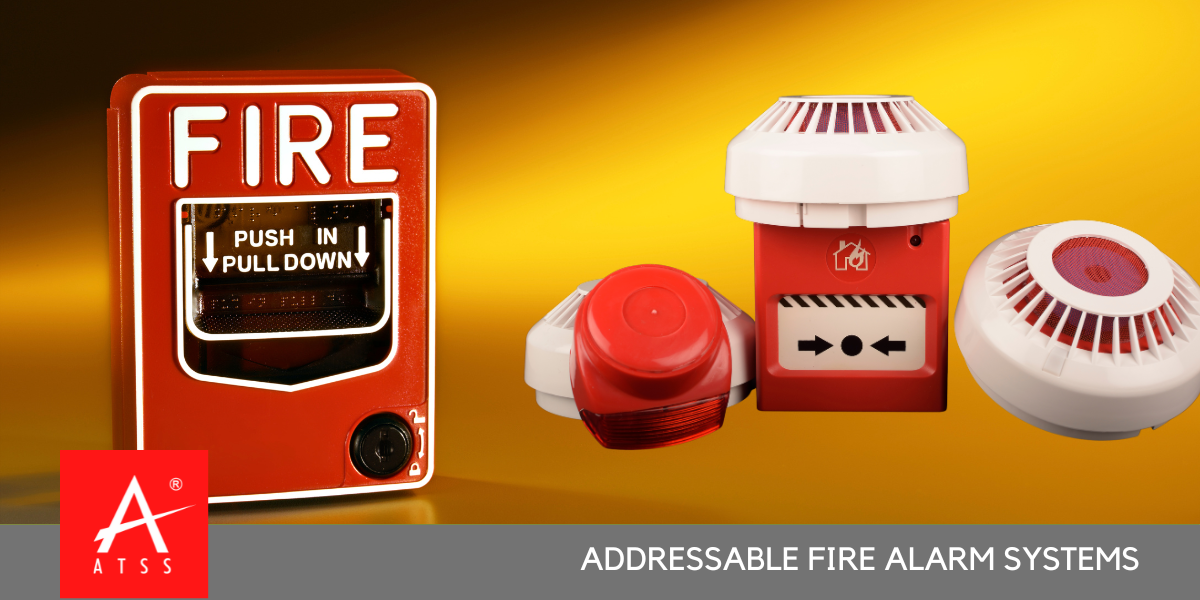
Addressable Fire Alarm Systems
Addressable Fire Alarm Systems: The Benefits
Addressable fire alarm systems are the most advanced and sophisticated type of fire alarm system available. They offer a number of benefits over traditional, conventional fire alarm systems, including:
● Enhanced fire detection: Addressable fire alarm systems can detect fires more quickly and accurately than conventional systems. This is because each detector in an addressable system has its own unique address, which allows the control panel to pinpoint the exact location of a fire.
● Greater flexibility: Addressable fire alarm systems are more flexible than conventional systems, which means they can be easily customized to meet the specific needs of a building. For example, addressable systems can be used to create zoned systems, which allow different areas of a building to be protected by different alarm levels.
● Improved occupant notification: Addressable fire alarm systems can provide a variety of notification methods, including sounders, strobes, and voice evacuation systems. This ensures that all occupants of a building are aware of a fire and know what to do to stay safe.
● Ease of maintenance: Addressable fire alarm systems are easier to maintain than conventional systems. This is because each detector in an addressable system can be individually tested and replaced, which reduces the need for large-scale system shutdowns.
In addition to these benefits, addressable fire alarm systems can also help to reduce insurance premiums. Many insurance companies offer discounts to businesses that have these systems installed.
They can be easily integrated with other building systems, such as security systems and HVAC systems.
They can be monitored remotely, which can help to ensure that the system is always in working order. They can be customized to meet the specific needs of a building.
Here are some of the specific benefits of the components of an addressable fire alarm system:
● Addressable fire alarm control panel: The control panel is the heart of the addressable fire alarm system. It receives signals from the detectors and notification devices, and it controls the operation of the system. The control panel can also be used to monitor the system for faults and to troubleshoot problems.
● Fire detectors: Fire detectors are the devices that detect fires. There are two main types of fire detectors: smoke detectors and heat detectors. Smoke detectors detect smoke, while heat detectors detect heat. Addressable fire detectors have their own unique address, which allows the control panel to pinpoint the exact location of a fire.
● Alarm notification devices: Alarm notification devices are used to alert occupants of a fire. There are two main types of alarm notification devices: sounders and strobes. Sounders produce an audible alarm, while strobes produce a visual alarm. Addressable alarm notification devices can be programmed to operate in different ways, depending on the severity of the fire.
● Manual call points: Manual call points are devices that can be used to manually activate a fire alarm. They are typically located in strategic locations throughout a building, such as near exits and in stairwells.
● Modules: Modules are used to expand the capabilities of an addressable fire alarm system. There are a variety of modules available, including input modules, output modules, and isolator modules. Input modules are used to connect detectors and other devices to the control panel. Output modules are used to control alarm notification devices. Isolator modules are used to isolate sections of the system from the rest of the system.
If you are looking for a fire alarm system that offers the highest level of protection, then an addressable fire alarm system is the best option for you. These systems offer a number of benefits over traditional, conventional fire alarm systems, including enhanced fire detection, greater flexibility, improved occupant notification, and ease of maintenance.

